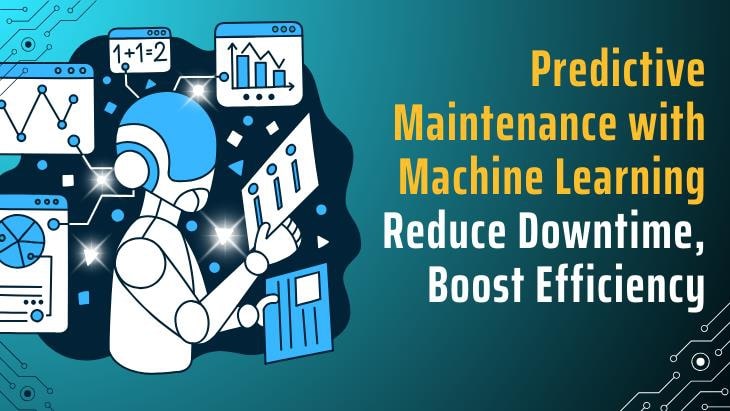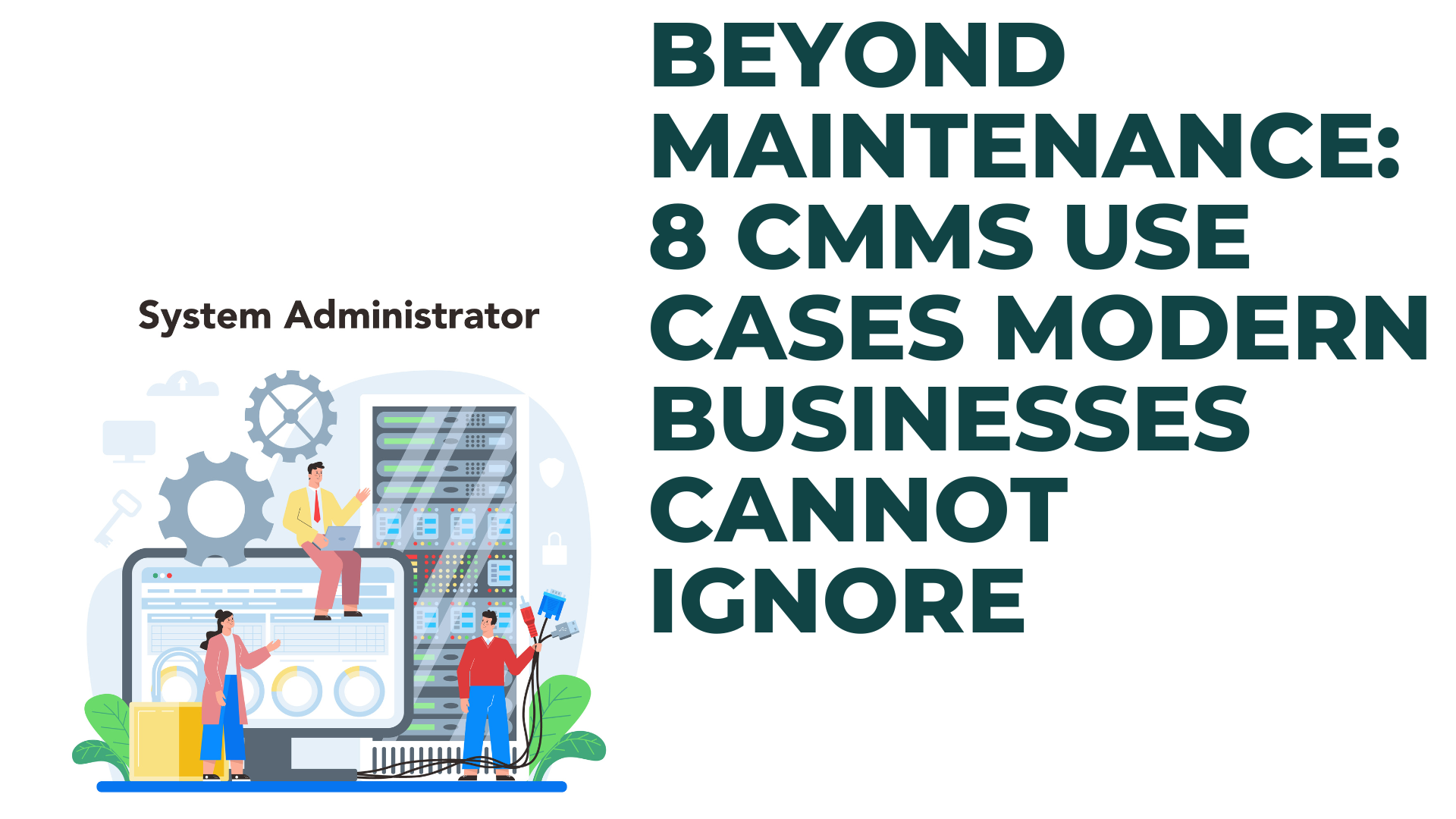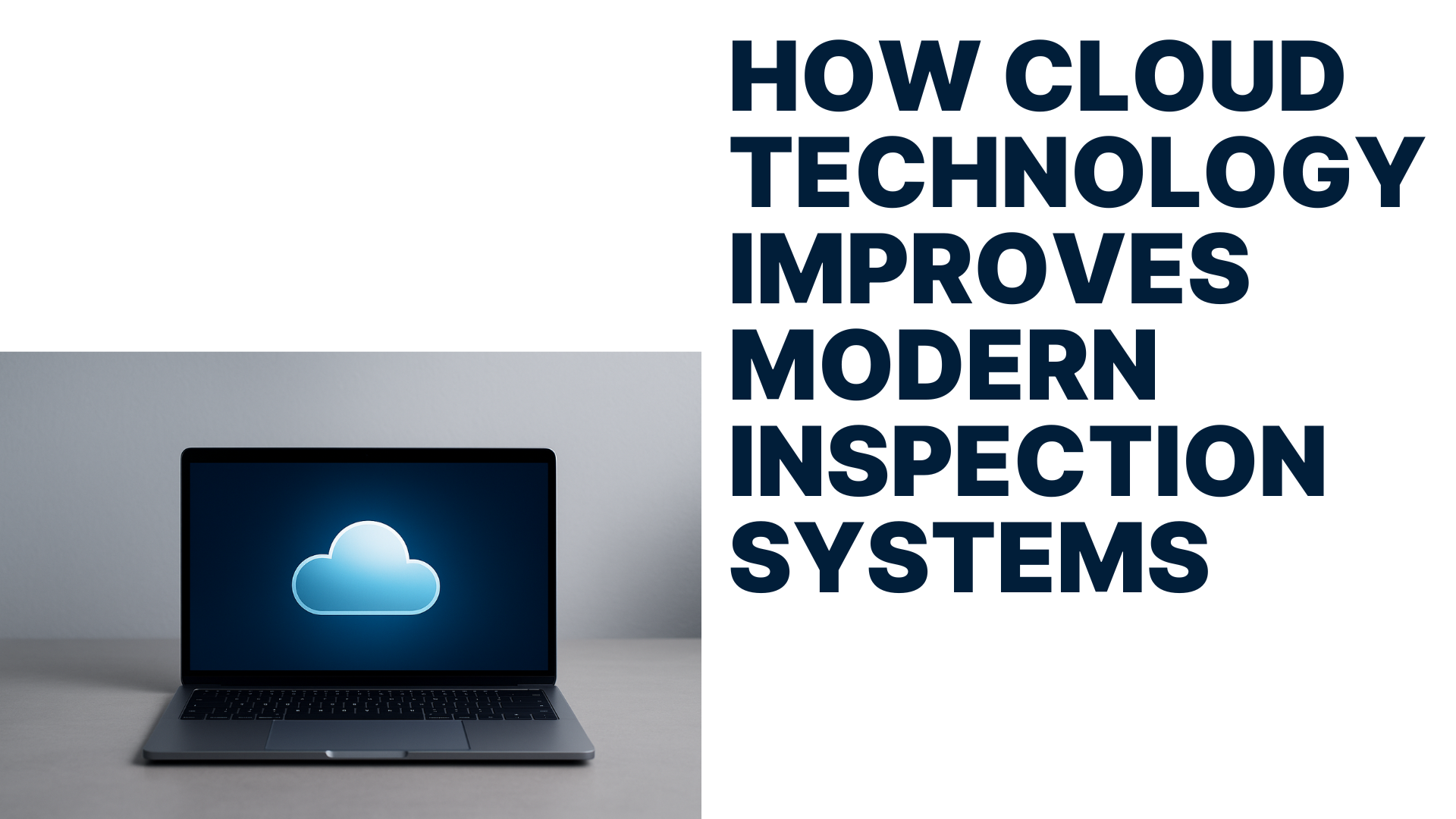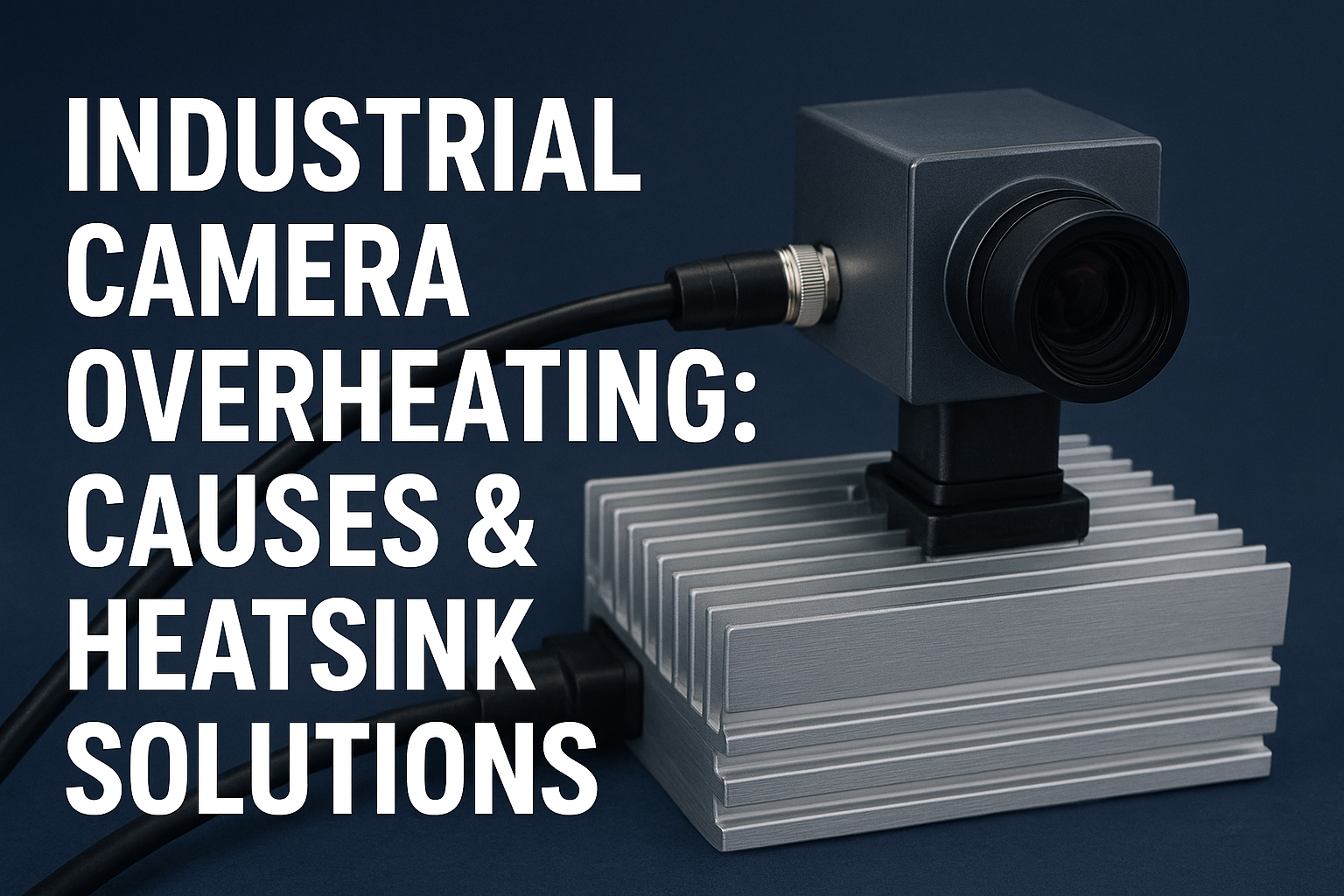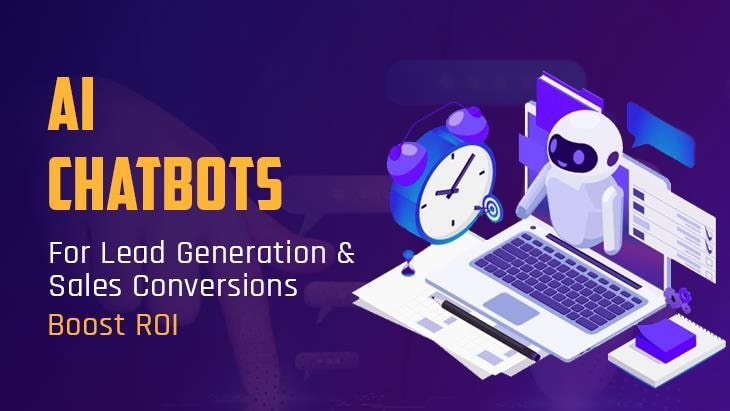In a competitive industrial environment, unexpected downtime is an important part of any industry. Unexpected equipment breakdown could cause lost income, higher maintenance expenses, and manufacturing delays. Reactive and preventative maintenance, among other conventional maintenance techniques, fall short of maximising asset performance and reducing unplanned downtime. Now enter predictive maintenance (PdM) driven by machine learning (ML), a groundbreaking method revolutionising industry equipment maintenance.
In this blog post, we’ll explore predictive maintenance, how machine learning enables it, the technology involved, use examples across industries, and how companies may apply PdM to reduce downtime and maximise operational efficiency.
What is Predictive Maintenance?
Using sensor data, past performance, and advanced analytics, predictive maintenance (PdM) is a data-driven maintenance approach that forecasts when equipment is most likely to fail. The major goals are to execute maintenance just in time—not too early (wasting resources) and not too late—causing unanticipated problems.
Predictive maintenance is more accurate and less expensive than preventative maintenance following a schedule since it depends on the real state of the equipment.
The Role of Machine Learning in Predictive Maintenance
Predictive maintenance gains another dimension via machine learning. Many traditional prediction methods, including statistical modelling, find it difficult to fit dynamic and complicated systems. But machine learning enjoys such surroundings.
ML improves predictive maintenance in the following ways:
- Data Collection and Integration: IoT sensors included in modern industrial equipment constantly gather data, including temperature, vibration, pressure, sound, and current. Integrating information from several sources—SCADA systems, maintenance logs, operator notes, etc.—machine learning models can consume this enormous volume of real-time and historical data.
- Anomaly Detection: ML techniques can be taught to spot aberrant equipment performance trends. Often before equipment failure, techniques include unsupervised learning and clustering to find deviations from normal operation. This approach makes early warning and quick response possible.
- Forecasting Failure: Trained on labelled datasets, supervised learning algorithms, such as decision trees, support vector machines, and neural networks, can forecast the remaining usable life (RUL) of machinery or find the probability of failure over a given period.
- Prescriptive Insights: Advanced ML models provide the best maintenance procedures and forecast breakdowns. By modelling several situations, maintenance managers can identify the most affordable solution with the least influence on operations.
Advances in Predictive Maintenance Using Machine Learning
Using ML-driven predictive maintenance presents several clear advantages for many different sectors:
- Reduced Downtime: Predicting failures before they occur helps maintenance be planned aggressively, thereby reducing unplanned breakdowns and manufacturing interruptions.
- Cost Savings: Avoiding catastrophic failures reduces spare component inventory, minimises repair costs, and maximises labour allocation.
- Extended Equipment Lifespan: Constant monitoring ensures that equipment receives the necessary maintenance, thereby preventing both under- and over-maintenance.
- Improved Safety: Early identification of possible faults helps to lower the risk of mishaps and guarantees a safer workplace.
- Enhanced Operational Efficiency: Reliable equipment performance results in improved operations, more output, and better use of resources.
- Data-Driven Insights: Machine learning gives insightful analysis of equipment performance trends, therefore supporting strategic decision-making.
Key Machine Learning Techniques Used in Predictive Maintenance (PdM)
Using several machine learning (ML) approaches, predictive maintenance (PdM) analyses equipment data and precisely forecasts faults. The type of data accessible, the system's complexity, and the particular maintenance objectives all affect the method of choice. The most often applied ML methods in PdM are listed below:
1. Supervised Learning
Supervised learning algorithms need labelled datasets with past instances of both normal operations and failures. These algorithms pick out patterns that set apart healthy from defective states.
Algorithms:
- Decision Trees & Random Forests: Simple to understand and efficient for classification and regression challenges are decision trees and random forests. Decision trees and random forests are applied to forecast Remaining Useful Life (RUL) or equipment failure status.
- Support Vector Machines (SVM): Effective in high-dimensional domains, Support Vector Machines (SVM) fit for binary classification (failure against non-failure).
- Neural Networks: Particularly deep learning models can pick out intricate, nonlinear correlations in sensor data.
- Gradient Boosting Machines (LightGBM, XGBoost): Strong for structured data and have demonstrated outstanding predicting task accuracy.
Use Case: Based on sensor readings, project the RUL or if a machine will fail within a specified period.
2. Unsupervised Learning
Especially useful for anomaly identification in PdM, unsupervised learning does not depend on labelled failure data. These systems learn both about anomalies and the usual behaviour of machinery.
Algorithms:
- Clustering (K-Means, DBSCAN) groups data points; outliers could point to abnormalities or early failure signals.
- Autoencoders: Large reconstruction mistakes in autoencoders—neural networks taught to reconstruct input data—sign point anomalies.
- Principal Component Analysis (PCA): Reducing dimensionality with principal component analysis (PCA) helps emphasise deviations from normal operations.
Use Case: Finding odd temperature spikes or vibration patterns suggesting developing flaws.
3. Time Series Analysis
Many PdM datasets span sequential sensor readings throughout time. Time series models trend and temporal dependencies.
Algorithms:
- Recurrent Neural Networks (RNN), including LSTM (Long Short-Term Memory): This approach is effective for temporal sequence modelling and future behaviour.
- ARIMA (AutoRegressive Integrated Moving Average) is a traditional statistical approach for making predictions based on historical values.
- Temporal Convolutional Networks (TCN) are designed to handle long-range dependencies.
Use Case: Values help one to identify slow deterioration.
4. Regression Analysis
Regression methods are used to forecast continuous variables, including the remaining life of components or the time until failure.
Algorithms:
- Linear Regression: Simplified baseline model for trend estimation in linear regression
- Support Vector Regression (SVR): For nonlinear regression challenges.
- Random Forest Regression: The system handles difficult interactions between features in random forest regression.
Use Case: Projecting the remaining cycles or hours before maintenance is required.
5. Reinforcement Learning
- Although less prevalent, reinforcement learning (RL) can learn the ideal series of actions to maximise equipment uptime and save expenses, hence optimising maintenance plans.
Use Case: Dynamic scheduling of maintenance tasks depending on real-time feedback and changing equipment conditions is used here.
6. Feature Engineering and Selection
The good features found in raw data are fundamental for machine learning models. Styles including:
- Statistical Features: Mean, variance, kurtosis, and sensor signal skewness.
- Frequency Domain Features: Fourier Transform analysis of vibration frequencies
- Wavelet Transforms: record fleeting signal properties.
- Dimensionality Reduction: PCA and other dimensionality reduction techniques help choose pertinent features and lower noise.
Essential ML Approaches for Predicting Equipment Failures
Machine learning methods provide powerful tools to extract useful insights from enormous volumes of equipment data. The best predicted performance often results from the combination of multiple machine learning techniques. Unsupervised models, for instance, can find abnormalities; supervised models can then classify and forecast more precisely.
Using these methods requires domain expertise when selecting pertinent characteristics, comprehending machine behaviour, and correctly interpreting model outputs. When done correctly, ML-driven predictive maintenance optimises your operational data, thereby preventing
Use Cases Across Industries
Already producing amazing results in many different fields, predictive maintenance using machine learning:
- Manufacturing: Production lines, CNC machines, and machine tools all gain from vibration and temperature control. By predicting problems in bearings, motors, and spindles, ML models help companies prevent manufacturing interruptions.
- Aerospace: aircraft engines and critical parts are used to monitor stress, temperature, and usage hours. Predictive analytics improves aircraft safety and cuts maintenance turnaround times.
- Logistics: Predictive maintenance is used by automotive fleet operators to track engine performance, tyre pressure, and brake problems, thereby guaranteeing timely servicing and reducing roadside failures.
- Energy and Utilities: IoT and ML monitoring of wind turbines, power transformers, and grid infrastructure helps to prevent expensive outages and enhance energy delivery dependability.
- Railway Systems: Track and rolling stock sensors find wheel, axle, and brake defects. ML models forecast wear and tear, therefore lowering the chances of derailment and delays in services.
- Healthcare: hospital equipment, including dialysis systems, ventilators, and MRI machines is watched for performance decline. Predictive maintenance ensures that life-saving tools are always available.
- Mining activities are characterised by high asset intensities. By forecasting failure in crushers, conveyor systems, and haul trucks, ML improves equipment availability and lowers safety events.
- Construction: Heavy items such as concrete pumps, cranes, and excavators are monitored for wear and load stress during construction. ML models project equipment breakdown in demanding conditions.
Challenges in Implementing Predictive Maintenance
Although predictive maintenance driven by ML has advantages, there are difficulties in applying it:
- Data Availability and Quality: Inaccurate models result from inadequate past failure records or poor-quality sensor data. Proper data-collecting and labelling systems must be investments made by companies.
- Integration's Complication: Including predictive systems in current ERPs, CMMS (computerised maintenance management systems), and operational processes calls for careful design and modification.
- Skill Gaps: Building and preserving ML models calls for understanding in data science, machine learning, and domain knowledge—a set of abilities many conventional maintenance teams might not possess.
- Initial Investment: Using sensors, data infrastructure, and ML tools requires initial expenses. Still, the long-term ROI usually makes the investment justified.
Best Practices for Successful Implementation
Organisations should use these best practices to effectively implement predictive maintenance with ML:
- Start Small: Start with pilot projects on important gear to show value and learn from experience.
- Ensure Cross-Functional Collaboration: Involve maintenance teams, data scientists, and IT staff to match expectations and goals.
- Focus on Data: Embrace good, labelled data and make investments in strong data governance.
- Iterate and Improve: Retrain with fresh data, constantly monitoring model performance to increase accuracy.
- Leverage Pre-Built Solutions: Use ML platforms and vendor solutions catered for predictive maintenance to hasten deployment using pre-built solutions.
In Conclusion
For forward-looking companies, predictive maintenance driven by machine learning is a strategic advantage rather than only a technical one. Accurate equipment failure prediction and data-driven maintenance decision support can help companies lower costs, minimise downtime, and maximise rational efficiency.
Machine learning provides the intelligence needed to keep industrial systems working smoothly both now and into the future in a time when resilience and efficiency are important competitive differentiators.
Are you prepared to use operational predictive maintenance? Using machine learning will change your maintenance approach and provide quantifiable benefits regardless of your industry—manufacturing, transportation, energy, or another.










